A few weeks ago now, the sun beat down, the humidex was beyond bearable, yet the fourth year class persevered through conceiving, mounting and exploring twelve landscape installations throughout downtown Galt. The study of Contemporary Landscape, led by Elise Shelley, first tasked groups to investigate the pedagogy of a specific landscape architect who has been influential in the development of the profession. Through this understanding of an approach to landscape design, students were then challenged to test their own strategies through a temporal installation. Each explored our relationship to the urban landscape and use of public space while testing ideas of process and design execution. See the last visit here.
Here is a tour of a few more of the projects:
Play Box
Based on work of Roberto Burle Marx
Jaewoo Chon, Miles Gertler, Jana Horecka, Michael Lee, Lingfei Liu, Quan Thai
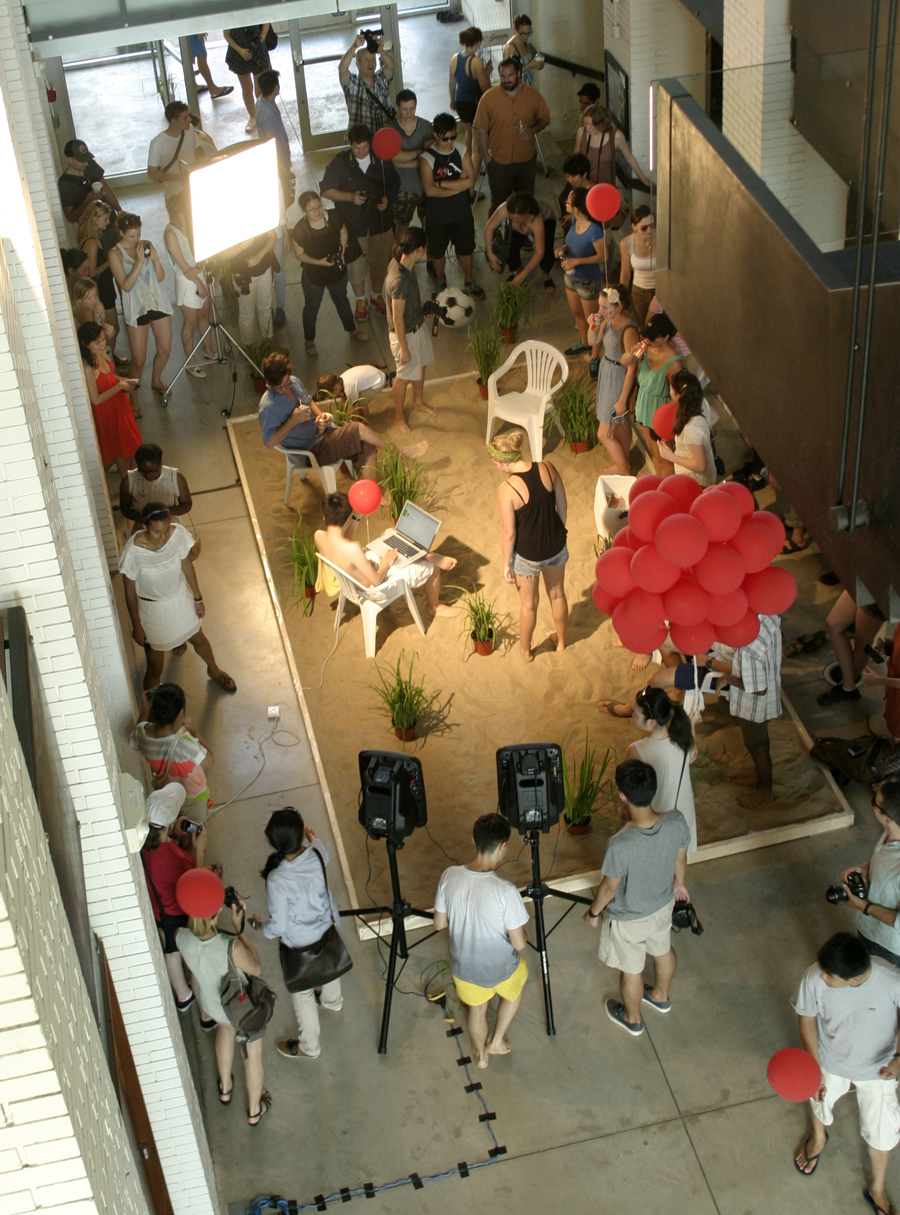
Consistent with the work of Roberto Burle Marx, it was our intention to transform a residual, underused area into a vital public space. The ground floor atrium in the School of Architecture was our site.
The intervention juxtaposed an exotic “playbox” garden in a foreign context, using minimal means. Our project, an artificial beach garden, was populated with a collage of refuse: items typically scattered across seaside shores. Among them, a beach ball, plastic chairs, an icebox, and tropical grasses.
The installation layered a plan for leisure and atmosphere on a site that, in its current form, is devoid of any infrastructure that would support exactly that. Additionally, one could make the case that no place of repose in the School of Architecture, or Cambridge at large, actually provides a vital space for social gathering. The leisurely quality of the intervention will be amplified when placed in the centre of the institutional university building (particularly as the intervention coincided with the studio deadline of another class). The ground floor atrium is visible from all levels in the School of Architecture and it is its geographic centre. This installation presents a scheme for its shared occupation.
The Hanging Wall of Affordable Fast-Growing Plants for the Common People Featuring Benches
Based on the work of Kongjian Yu
Andrew Brown, Callan Wilson-Delafield, Dusty Parkes, Fraser Plaxton, Karine Quigley, Qinyu Lu, Simeon Rivier
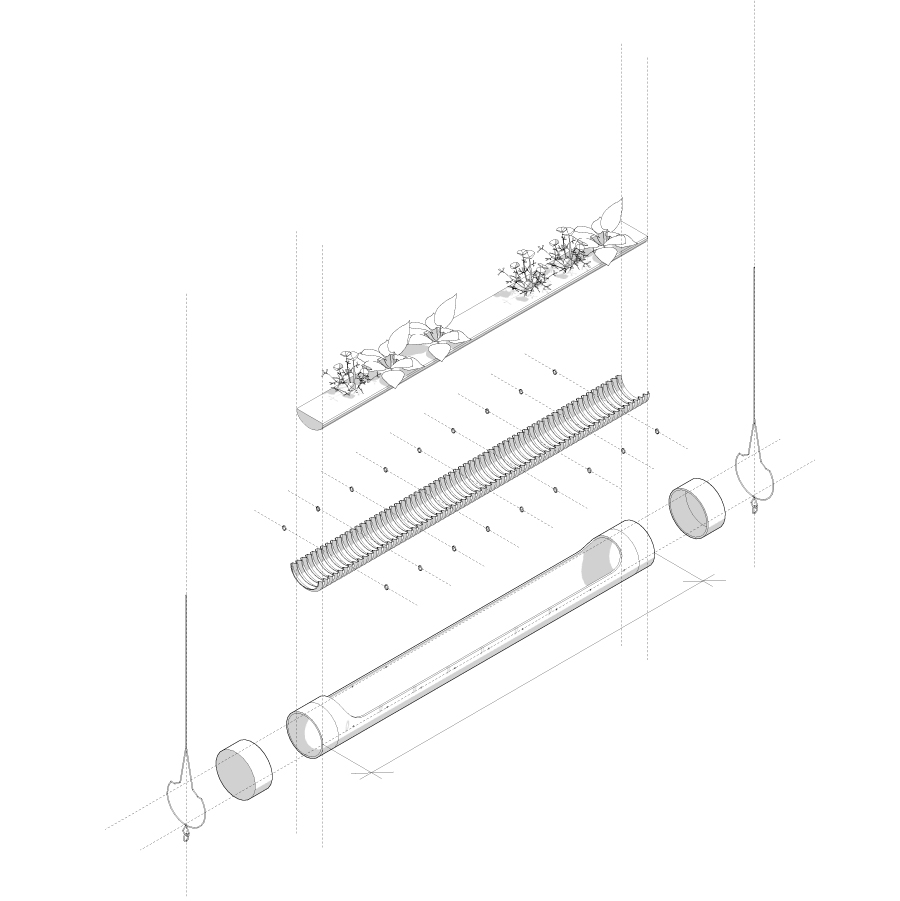
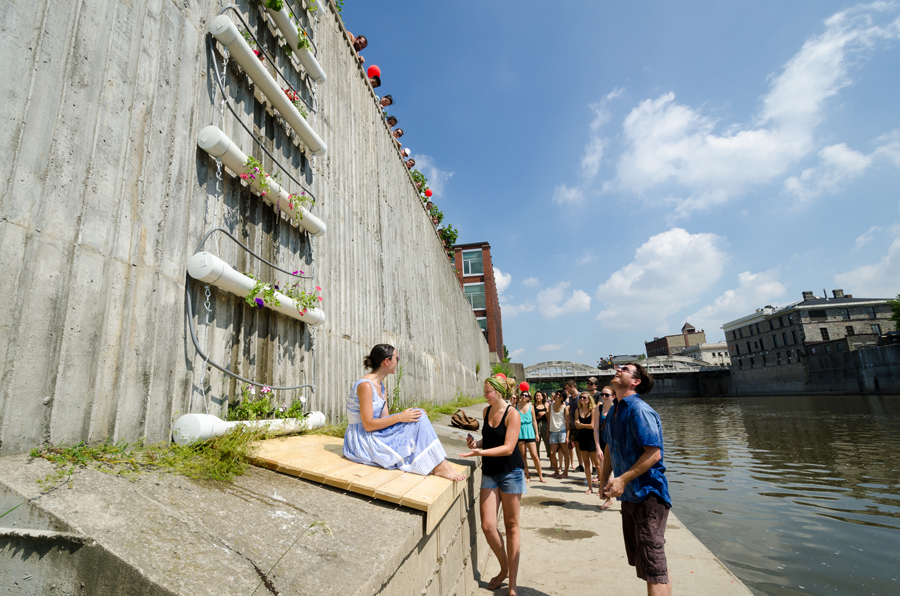
The Hanging Wall of Affordable Fast-Growing Plants for the Common People Featuring Benches is a prototype for how Cambridge might soften the harsh environment created by the flood wall by enabling the sort of plant growth that would naturally occur adjacent to the river. The installation embraces the geometry of the flood wall rather than viewing it as a weakness and provides light infrastructure for the fishing activities that already take place on the site. The system can be flooded.
Slippage
Based on the work of Dan Kiley
Val Arthur, Piper Bernbaum, Edwina Chen, Laura Langridge, Laura Pellow, William Pentesco, Caleb Tsui
Slippage: The act or instance of slipping, especially from an original place – drawing out or pulling away from what exists
Slippage is a reinterpretation of the existing architecture and conditions of built structures in Cambridge. Inspired by the structural columns and rid of the Waterloo School of Architecture, Slippage introduces a series of green patches and lawn strips that extend the facade of the building out onto the asphalt roadway in front of the school. The strips of sod on the concrete path connecting the building acts both as a place to stop and engage with the surroundings, like mini parks or front lawns, as well as operates as a blockade that redefines the space for users. With all recyclable or natural materials, the project demonstrates how easily exterior space can be re-adjusted and altered. The division of space with soft, approachable materials, along what a mundane road, begins to create outdoor rooms for inhabitation.
Information Transfer
Based on the work of Martha Schwartz
Aurelia Adams, Patricia Beaulieu, Matthew Davis, Jameela Derrick, Quinn Greer, Sara Radcliffe
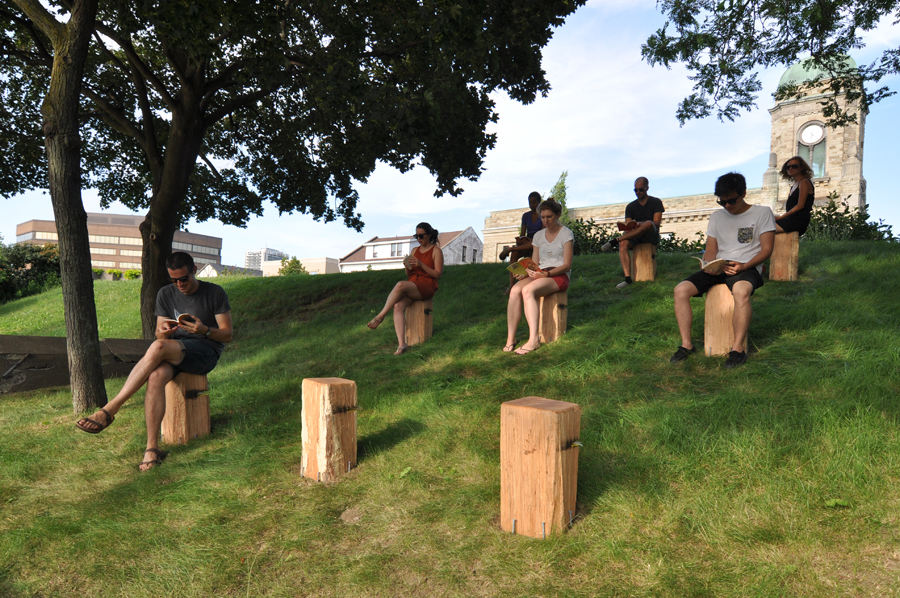
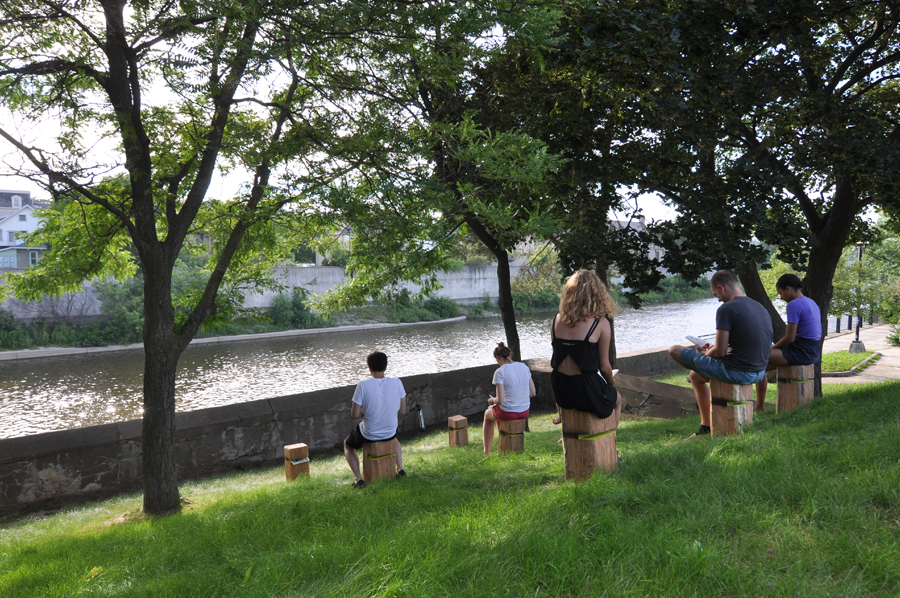
This installation challenges the contemporary exchange of information, which has so recently shifted from interactions in existing three-dimensional space to a constructed virtual reality contained in a hand-held device or online. Sited on a berm beside one of the well known Carnegie Libraries, each of the nine bespoke stumps provide the opportunity to unplug and return to the present experience. Each stump contains a slot that houses a book, inviting the user to swap the book for their hand-held and read in the shade of two mature trees located onsite, while enjoying an unobstructed view to the Grand River. The stumps, entirely handcrafted are also an allusion to the past in their rough hewn and solid appearance, with an indication of the present day found in the fluorescent finishing on the inside of the book slots.


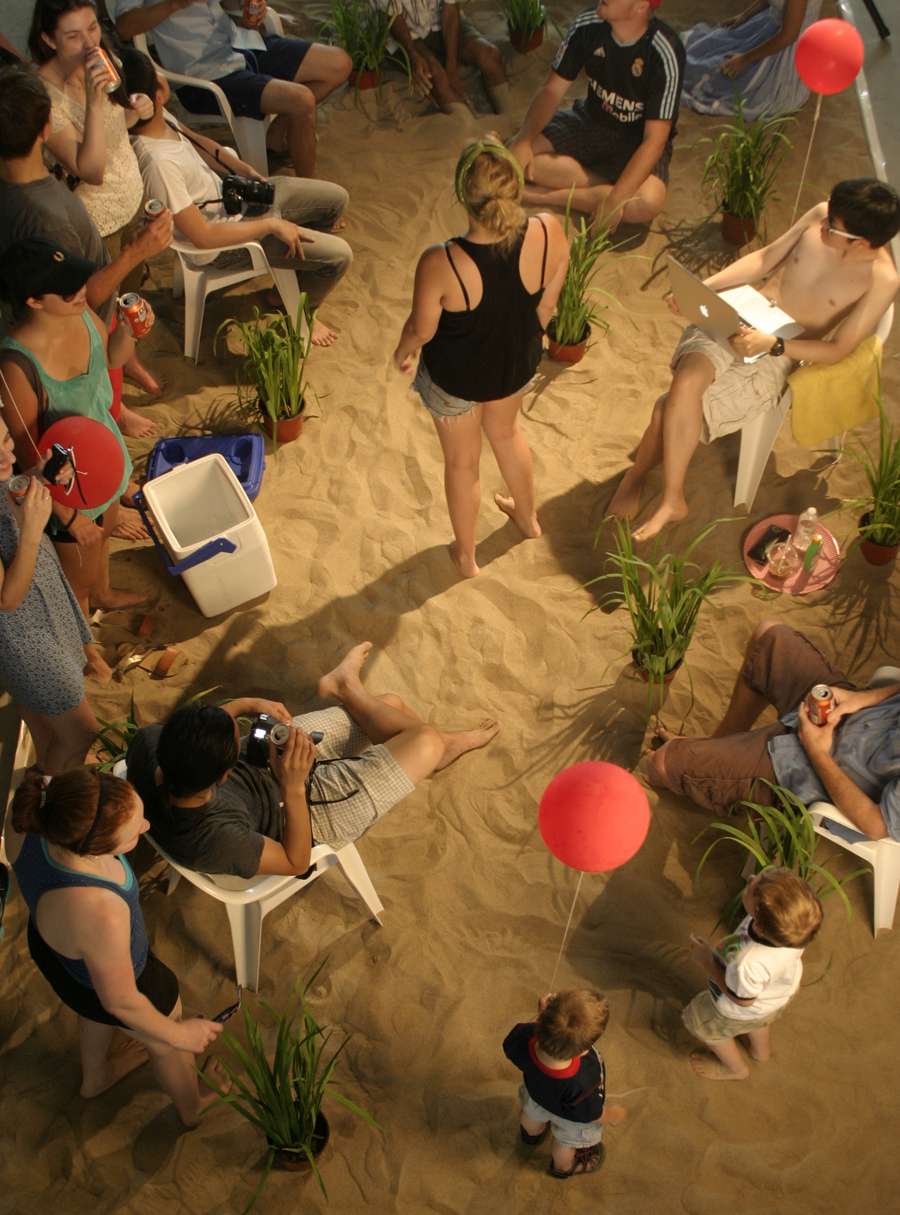
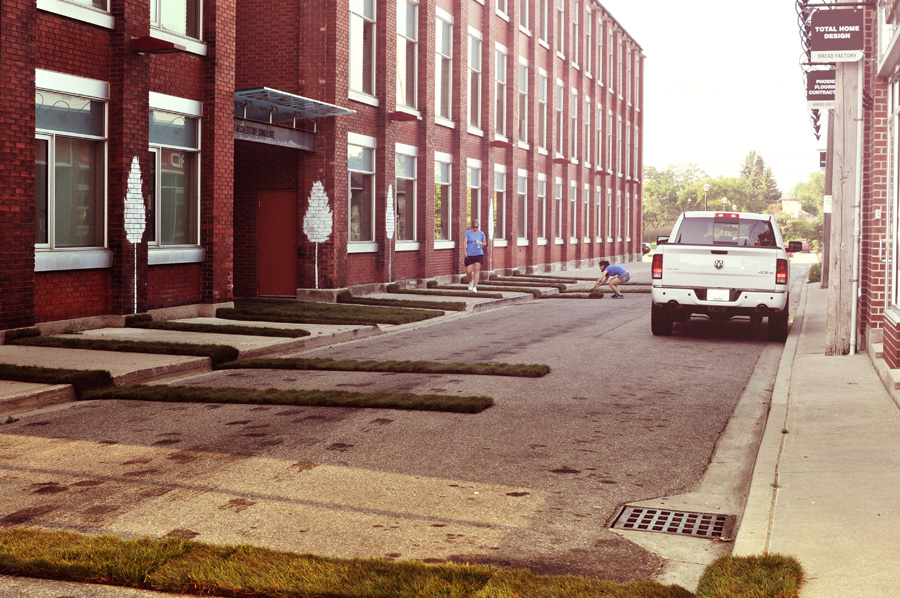
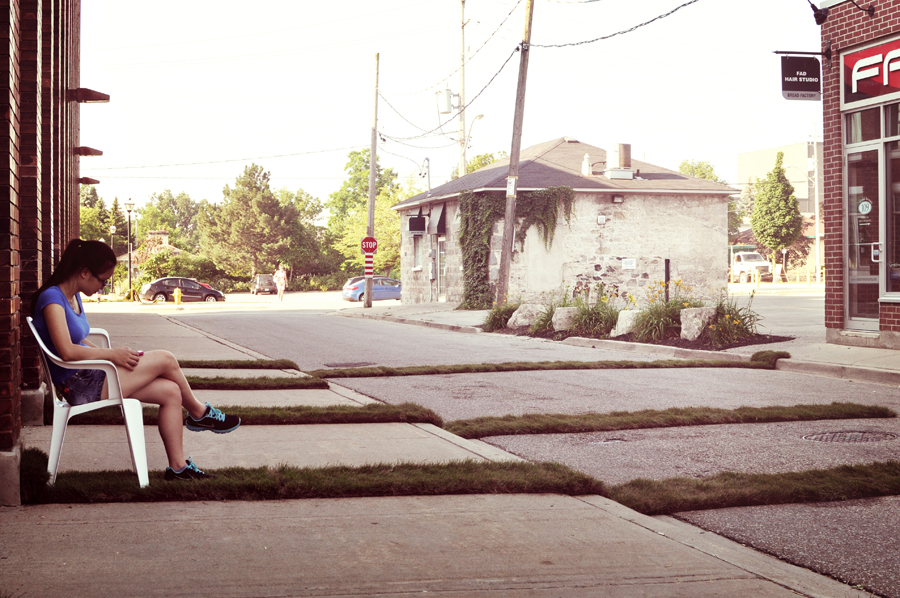

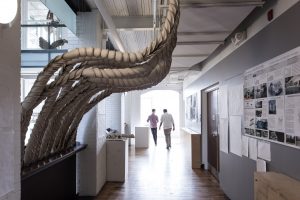

Leave a Reply